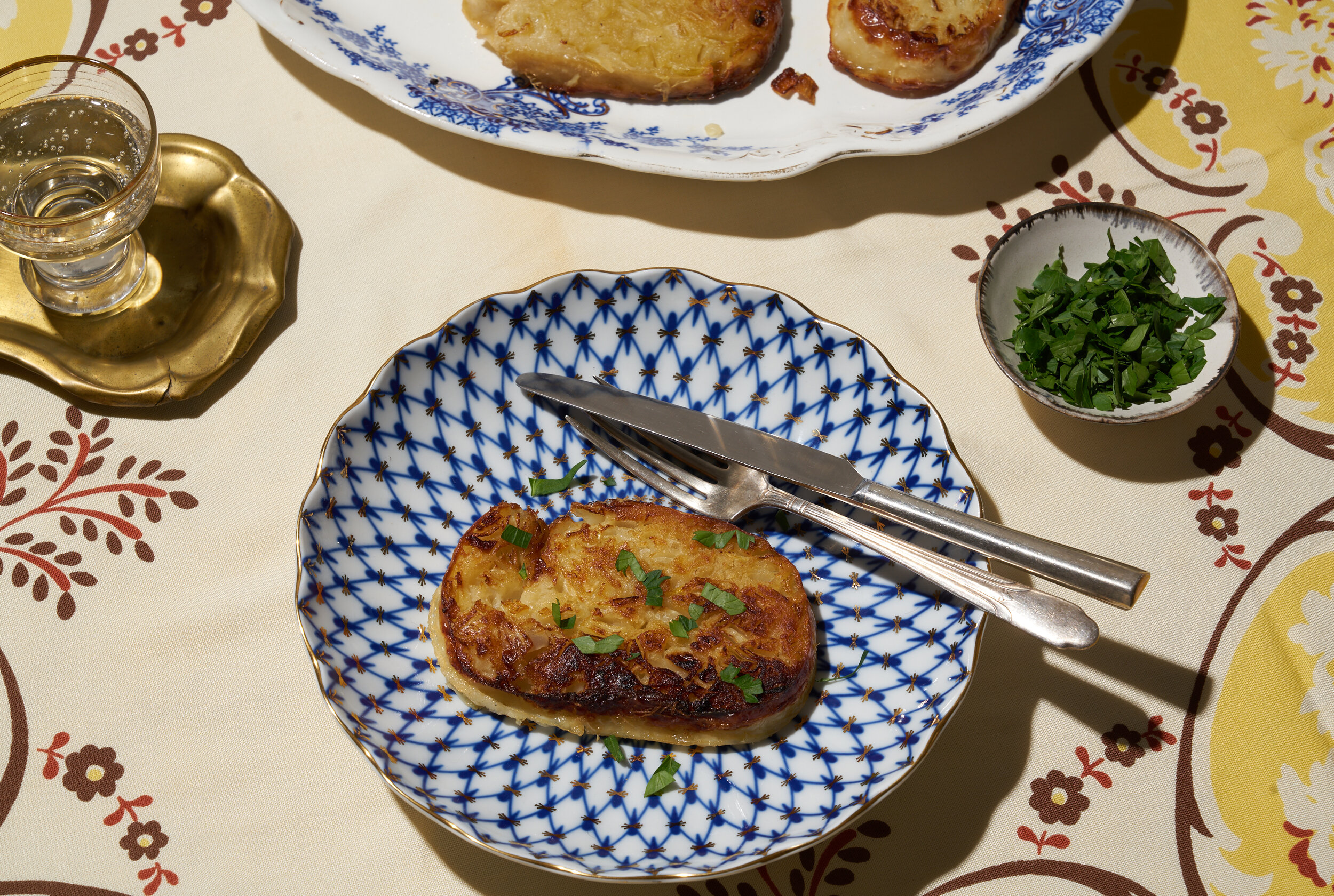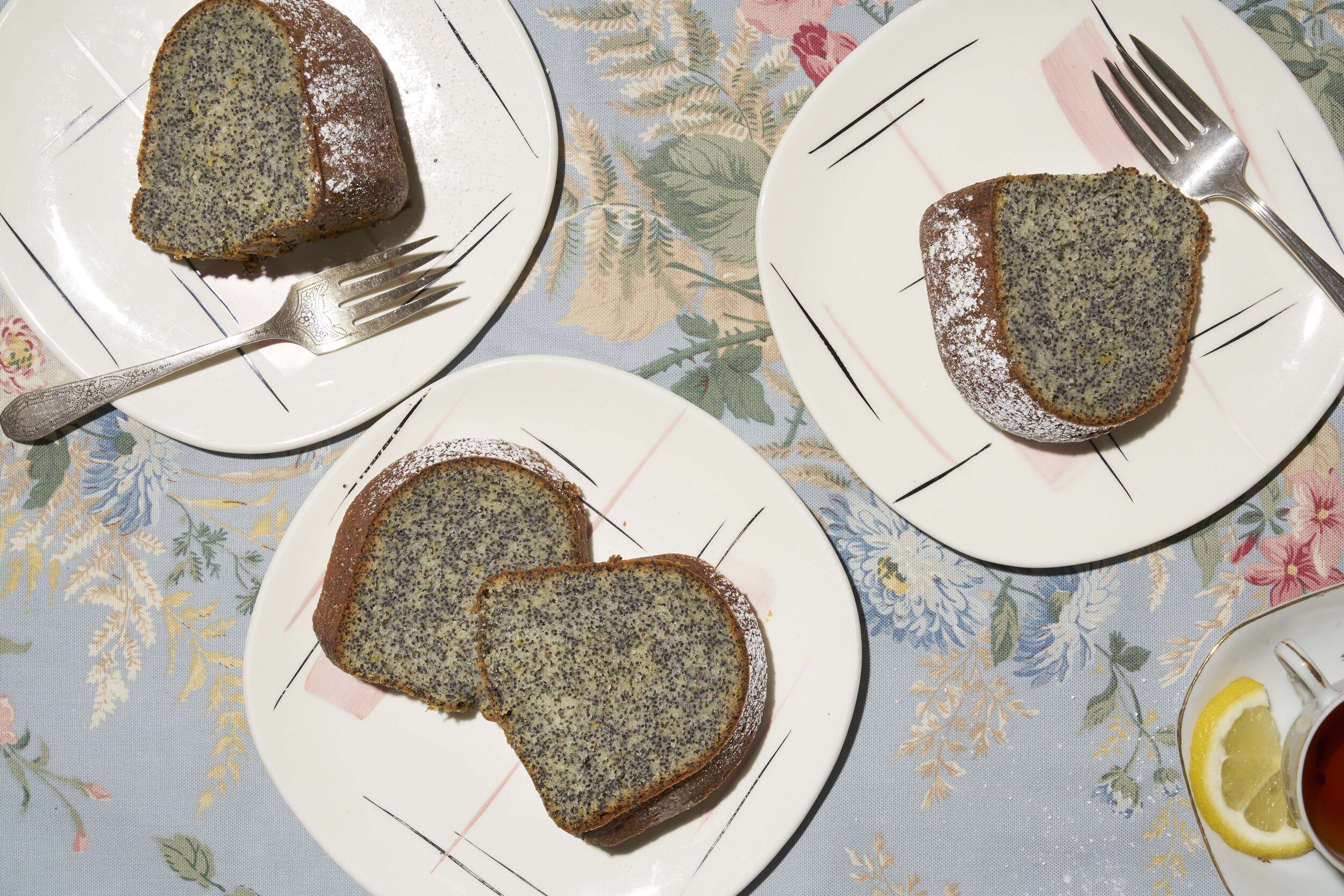The Russian Recipe One Cook Carried to Siberia and Queens
Shared by Lyuba Sheynin and Masha Lisak
Recipe Roots: St. Petersburg, Russia > Kamchatka Peninsula, Russia > St. Petersburg > Queens, New York and the Bay Area, California
Lyuba Sheynin is the type of cook who travels with her Russian recipes — across continents and oceans. She first learned to cook when she was 12 and her mother became ill. During World War II, as a German blockade kept Leningrad cut off, food in her community was scarce. She would make soup with half a cup of flour and fried bread on a wood-fired stove, her granddaughter Masha Lisak explained as we cooked with her earlier this year. Lyuba would use whatever was on hand, stretching and preserving ingredients.
That approach to cooking, is seen in her recipes like one for sheika, or stuffed chicken neck, which Lyuba describes as a uniquely Jewish dish. It’s a recipe she learned from her mother, Sofia Broide, who grew up in the Pale of Settlement. And one she used to make for Soviet holidays, since celebrating Jewish holidays was outlawed in the USSR.
Lyuba, who taught physics, brought recipes like this one when she moved with her husband Isidor from St. Petersburg across nine time zones to the Kamchatka Peninsula, in the far eastern reaches of Russia in the early 1950s. Here, she befriended a woman named Natasha, whose mother Raisa had fled from Stalin when Natasha and her sister were little, moving from St. Petersburg to Siberia for protection. Lyuba adopted one of her friend’s recipes as her own, a poppyseed cake. The recipe is so beloved in the family, it is served on birthdays and Masha has made a version in California where she lives, carrying the recipe almost a full circle around the globe.
When Lyuba came to the United States to lay the path for Masha and family in the mid-1990s, she brought that recipe, the chicken neck, her famed New Years Day gefilte fish, and others with her. Many of them are in notebooks that are written and rewritten over the years. “If she runs out of space or they get really greasy,” Masha explains, Lyuba will start another notebook, organizing them like dictionaries with notches on the side of the pages. And each time she prepares a recipe that’s not her own, Masha explains, she tells the table who the recipe is originally from.
When the family made a new life for themselves in Queens, New York, “the dinner table changed,” Masha says. “We were excited about the range of stuff that one could get.” For a few months, Jell-O salads graced the table as did other novelty items from American supermarkets. Eventually, though, the family circled back to its classics. And, Masha adds, “It’s not like anyone ever stopped cooking Russian food. My mom makes Russian food at home and that’s what they eat and that’s what I look forward to eating when I come visit them — Russian Jewish food.”
Lyuba's Sheika (Stuffed Chicken Neck)
Makes: 6 to 8 servings
Time: 1 hour and 15 minutes
Today, Lyuba uses the skin from a whole chicken as an encasing for the stuffing instead of the skin from a chicken neck which was traditionally used in Eastern Europe.
Ingredients
Skin and fat of 1 whole chicken (about 3 to 4 pounds)
1 ¼ cups flour
3 medium onions, chopped
1 teaspoon salt
½ cup schmaltz
Preparation
1. Clean the chicken: Rinse chicken and cut off and reserve any fat you can find. Loosen the skin of the chicken by rubbing your fingers under the skin and separating. Remove the skin in one giant piece.
2. In a large bowl, sift the flour over onions and mix to combine.
3. Cut the reserved fat into small pieces and place in the bowl with the flour and onions. Add the schmaltz and salt. Mix until combined.
4. Using a needle and thread, sew the edges of the skin of the chicken together to make a cavity for the filling. Stuff the skin with the onion and flour mixture and stitch to enclose completely.
5. Place the stuffed skin in a large stock pot and cover with cold water. Add 2 teaspoons of salt. Bring to a boil and then lower to a simmer and cook for 40 minutes.
6. Remove from the pot and slice once cool enough to handle. Serve immediately.
Cooks Note: To reheat: Sauté a sheika slice on a pan over medium heat until golden brown.
Lyuba's Poppy Seed Cake
Makes: 1 10 to 12 inch bundt or tube pan
Time: 30 minutes + 1 hour baking time + 2 hours resting time
Ingredients
16 ounces sour cream
1 cup poppy seeds
4 large eggs
1 ½ cups sugar
2 sticks (1 cup) unsalted butter, melted
1 ¾ cups all-purpose flour, sifted
½ teaspoon salt
Zest of 1 lemon
1 teaspoon baking soda
1 tablespoon white vinegar
Confectioner’s sugar, for dusting
Preparation
1. In a medium bowl, combine the sour cream and poppy seeds. Cover and let sit for 2 hours or up to overnight in the refrigerator.
2. Preheat the oven to 350°F. Grease and flour a 10-12” bundt or tube pan and dust with flour.
3. Place the eggs in a large bowl and whisk to combine. Add the sugar and mix to combine. Add the poppy seed mixture and mix to combine. Add the butter and mix to combine. Add the flour and salt and mix to combine. Fold in the lemon zest.
4. Sprinkle the baking soda over the top of batter. Pour the vinegar directly over the baking soda. It will foam! Immediately start whisking vigorously until combined (an old Russian baking trick!).
5. Pour the batter into the prepared pan and bake until the cake pulls away from the sides of the pan, the top is a deep golden brown, and a tooth pick inserted near the center comes out clean, about 45-50 minutes.
6. Let cool then turn out of the pan and dust with confectioner’s sugar before serving.









